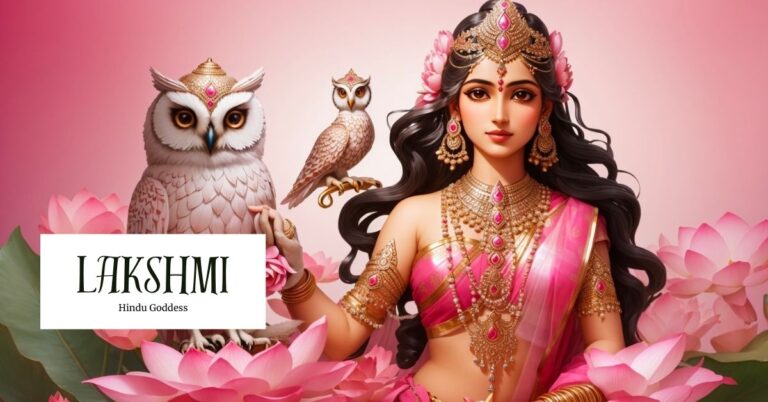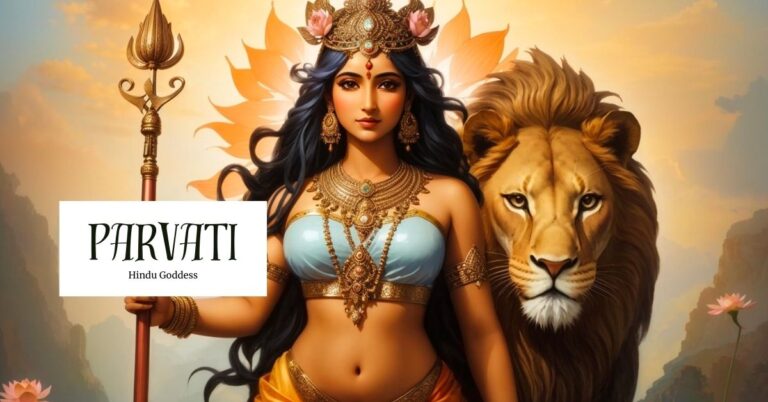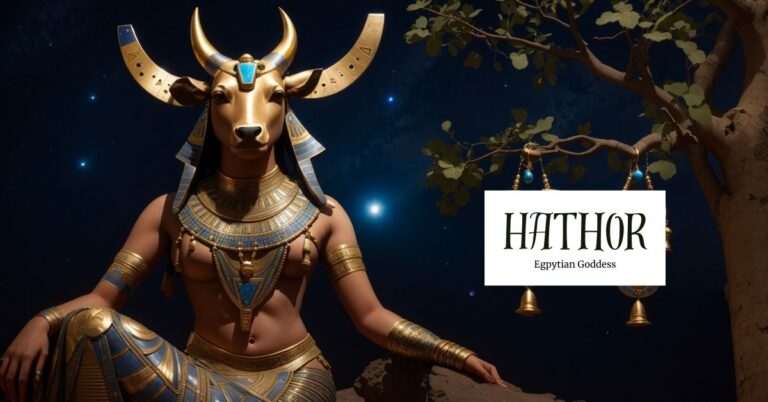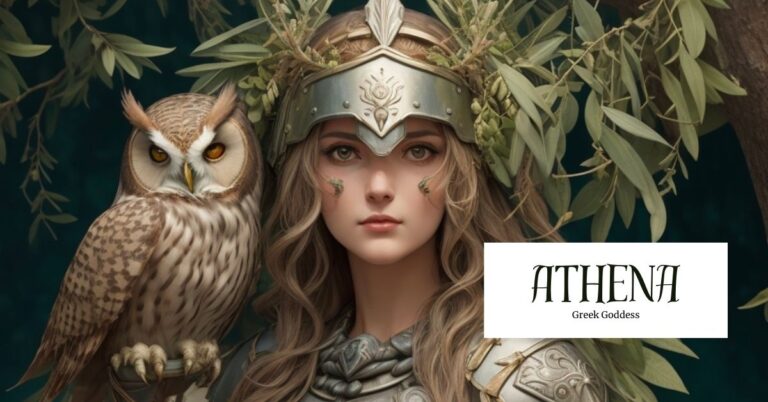Radha: The Goddess of Love, Tenderness, Compassion, and Devotion
Radha is a prominent and revered Hindu goddess who holds a special place in the hearts of millions of devotees worldwide. As the eternal lover and divine consort of Lord Krishna, Radha symbolizes pure love, devotion, and selflessness, embodying the highest ideals of loyalty. The multifaceted aspects of Radha’s character and significance are celebrated through numerous festivals and rituals dedicated to her.
In essence, Radha is an embodiment of the divine feminine, representing the transformative power of love and devotion. Her timeless story continues to captivate the hearts and minds of millions, offering a glimpse into the eternal nature of the soul and the power of divine love to uplift and transform the human spirit.
Overview of Radha
Radha occupies a central and revered position in Hindu scriptures, particularly within the context of Lord Krishna’s life and teachings. As per religious belief, she is considered an incarnation of the goddess Lakshmi, associated with wealth and prosperity (“Radha”).
Radha’s love for Krishna is regarded as the epitome of devotion, celebrated for its unparalleled depth and intensity. In deference to her exalted status and role as Krishna’s beloved, she is often called “Radharani,” which translates to “Queen Radha.” This title underscores the significance and divine connection between Radha and Krishna (“Radha”).
Radha’s devotion and love for Krishna inspire many Hindu followers, and she remains an influential and revered figure in the religion’s rich history and traditions.
Source: Shekharsrivastavaofficial
Titles
- Queen of Vrindavan
- Giver of Victory
- The Mother of All
Abilities
Radha possesses extraordinary abilities and qualities that render her an awe-inspiring goddess. Her divine attributes are deeply revered and include an unparalleled sense of devotion, unmatched compassion, ethereal beauty, and a profound role as a uniting force between mortals and the heavenly.
Radha’s love and affection for Lord Krishna transcends all worldly limits, inspiring devotees seeking a deep connection with the divine. Her unwavering commitment to Krishna exemplifies the highest form of devotion, characterized by selflessness and steadfast loyalty.
Beyond her attributes, Radha functions as a unifying force, bridging the gap between mortal beings and the divine realm. She expertly facilitates the union of individual souls with the Supreme Soul, guiding devotees toward spiritual enlightenment and realization (“Radha”). Radha is a shining paragon of spiritual excellence and a beacon of hope for all those seeking a deeper connection with the divine.
Characteristics
Radha’s physical appearance and overall demeanor are eloquently captured in numerous scriptures and artistic depictions.
She is often depicted as possessing a youthful and radiant complexion, accompanied by large, devoted eyes that reflect her profound love for Krishna.
Her long, lustrous hair, adorned with delicate flowers, cascades gracefully down her shoulders, symbolizing her purity and divine grace.
Radha’s attire, adorned with vibrant garments and exquisite jewelry, emphasizes her divine allure and elegance, making her a wonder to behold.
Source: Artsandculture
Traits
Radha is known for her exceptional qualities and unwavering devotion to Lord Krishna. Her impeccable character is characterized by personality traits that inspire loyalty and admiration among her followers.
These traits include unconditional love, humility, sacrifice, and emotional depth, all serving as a testament to the transformative power of love. Radha’s love for Krishna is absolute and boundless, surpassing all limitations. It is a love that transcends worldly boundaries and showcases the profound depths of the human capacity for love.
Despite being the object of Krishna’s affection, Radha remains remarkably humble and modest. Her humility is essential to her character, reflecting her understanding of the divine and her role as a devotee. She epitomizes selflessness, and her love is characterized by sacrifice and surrender. She willingly renounces her desires and aspirations, prioritizing Krishna’s happiness above hers. Her actions demonstrate the profound depths of her love and devotion.
Radha’s emotional depth is another striking aspect of her personality (“The Tale of Radha and Krishna – a Benchmark of Love”). She experiences various emotions, from profound longing and separation in Krishna’s absence to ecstatic union in his presence.
These emotional fluctuations reflect the complexities of the human heart and its yearning for divine love. Radha’s devotion to Lord Krishna is a source of inspiration and admiration for many, and her exemplary qualities continue to inspire devotees worldwide.
Symbols
Radha is often depicted with various symbols that carry profound meaning and significance. These symbols reflect her elevated consciousness and divine qualities and reinforce her sacred bond and divine love with Lord Krishna.
One of the most prominent symbols associated with Radha is the lotus, a symbol of purity and spiritual enlightenment. Radha is often depicted holding a lotus, representing her embodiment of divine virtues and elevated consciousness. Another symbol of Radha is the peacock feather, which adorns her hair. The peacock feather symbolizes beauty, grace, and divinity and represents Radha’s deep connection with Lord Krishna. As Lord Krishna is often depicted wearing a peacock feather on his crown, this symbol reinforces their sacred bond and divine love.
Finally, the flute is an iconic symbol associated with Lord Krishna and holds significance for Radha (“The Tale of Radha and Krishna – a Benchmark of Love”). The flute symbolizes Krishna’s divine music and ability to attract and enchant devotees. As Radha is inseparable from Krishna, the flute symbolizes Radha’s union with her beloved and their divine love.
These symbols associated with Radha carry significant meaning and reflect the divine qualities and sacred bond between Radha and Lord Krishna.
Source: Saatchiart
Festivals and Rituals
The devotees of Radha express their deep reverence, love, and gratitude towards her through a variety of religious festivals and rituals.
One of the most significant festivals is Radhastami, which is observed on the eighth day of the lunar month of Bhadrapada. On this auspicious occasion, devotees engage in fasting, sing devotional songs, and participate in ecstatic dances, known as Rasa Lila, to commemorate the appearance of Radha in the mortal realm.
In addition to Radhashtami, devotees perform Radha-Krishna puja, offering worship to both Radha and Krishna as a divine couple. They recite Radha mantras, invoking her blessings and seeking her divine grace. Furthermore, the devotees read and contemplate Radha’s pastimes and divine interactions with Krishna as described in sacred scriptures such as the Bhagavata Purana (“The Tale of Radha and Krishna – a Benchmark of Love”).
These festivals and rituals provide devotees with ample opportunities to deepen their connection with Radha, express their love, and engage in devotional practices centered around her divine presence.
The participation in these rituals and celebrations is believed to immerse devotees in Radha’s divine love and impart spiritual insights from her sacred teachings and experiences. Indeed, such observances serve as a profound expression of devotion and gratitude towards the divine feminine, Radha.
Source: Fineartamerica
Legends associated with Radha
Radha, the revered Hindu goddess, and beloved of Lord Krishna, occupies a paramount position in Hindu mythology and devotion. Her miraculous origins, boundless love for Krishna, and deep-rooted loyalty testify to the profoundness of faith and spirituality in Hinduism. Her significance in Hinduism is unparalleled, and her legends reflect the highest form of devotion and love.
Origin story
The origin tale of Radha is steeped in an air of enigma, its intricacies varying across diverse sources and traditions. However, most believe that Radha was born as the daughter of King Vrishabhanu and Queen Kirti (“Radha”), her exceptional birth occurring when she emerged from a lotus flower that blossomed in the mystical lake known as Radhakund, situated in the revered land of Vrindavan (“About Radha Rani: A Beautiful Hindu Goddess of Vrindavan – Rudra Centre”). This divine inception is a powerful testament to Radha’s exceptional nature and deep-seated connection with Lord Krishna.
Source: Quora
Radha and Krishna
One of the most cherished and esteemed legends in Hindu mythology is that of the divine love shared between the celestial beings Radha and Lord Krishna. The boundless love and unwavering devotion that Radha had for Krishna are considered to symbolize the concept of eternal love.
Their cosmic love is believed to transcend all worldly attachments, embodying the union of the individual soul (Radha) with the Supreme Soul (Krishna) (“The Tale of Radha and Krishna – a Benchmark of Love”). This divine love story continues to inspire countless devotees, illustrating the transformative power of true love and the potential for a profound spiritual connection with the divine.
Source: Ebay
Radha’s Devotion
Radha stands as a central figure in the divine pastimes of Krishna. As the playful Krishna engaged in merriment with his cowherd friends in the idyllic land of Vrindavan, Radha added depth, beauty, and enchantment to his pastimes, making them more vibrant and meaningful just by being there.
Radha’s participation in Krishna’s pastimes symbolizes their divine connection’s inseparable nature and highlights their profound love. Radha’s interactions with Krishna during these pastimes serve as a source of inspiration and devotion for countless devotees, who find solace and joy in witnessing the divine union of Radha and Krishna.
Her role in Krishna’s pastimes extends beyond being a mere companion; she embodies the essence of devotion, love, and spirituality. Her unwavering affection for Krishna and her presence during his divine play exemplifies the deep and inseparable bond between the individual soul (Radha) and the Supreme Soul (Krishna) (“The Tale of Radha and Krishna – a Benchmark of Love”).
Source: Ebay
Influences of other religions/cultures on Radha
Diverse religious and cultural influences have shaped Radha’s portrayal and recognition. In the context of Vaishnavism, a prominent Hindu tradition, Radha is revered as the ultimate embodiment of devotion and divine love. Her significance in this tradition stresses her role as Lord Krishna’s beloved and companion (“Radha”).
However, it is crucial to acknowledge that Radha’s depiction may differ in other regional and religious traditions. Depending on local customs, beliefs, and cultural influences, her image and traits may be interpreted and represented distinctively, reflecting the diversity of worship practices and the incorporation of local folklore.
These variations in Radha’s portrayal and recognition highlight the dynamic and evolving nature of religious and cultural traditions, facilitating the integration of diverse perspectives and expressions of devotion. Despite these differences, Radha continues to be revered and celebrated for her unwavering commitment and love for Lord Krishna across various religious and cultural contexts.
Modern appearances
Radha remains an enigmatic and revered figure in contemporary times, receiving adoration and worship from devotees worldwide. Within the Vaishnava tradition, she holds a significant and unparalleled place in devotional practices, as her divine love story with Krishna continues to inspire and captivate hearts. Devotees express their devotion towards Radha through various means, including constructing elaborate temples dedicated to her and Krishna. These sacred spaces serve as focal points for devotees to offer prayers, perform rituals, and engage in communal worship, thus fostering a deep spiritual connection and reverence.
Moreover, Radha’s divine love story finds expression through various cultural performances, such as dance dramas and music compositions (“Radha”), that bring to life the enchanting tales of Radha and Krishna. These artistic interpretations serve as a powerful medium for devotees to connect with their faith and evoke a profound sense of devotion, love, and spiritual connection among the audience. The impact of Radha’s story is timeless, and it continues to inspire generations of devotees worldwide, highlighting the enduring power of divine love and devotion.
Source: Amazon
Final thoughts
The venerated Hindu goddess Radha, the divine consort of Lord Krishna, holds a place of great reverence in the hearts of devout followers of Hinduism. Her character is marked by an unwavering love and devotion to her divine partner, a characteristic celebrated and upheld in the many legends and stories surrounding her.
Radha’s origin story and her role in the pastimes of Krishna serve as powerful reminders of the depth and significance of her character. At the same time, the influences of other religions and cultures have shaped how she is perceived and recognized.
Today, Radha’s legacy endures as a beacon of inspiration for devotees, with her divine love story and teachings serving as a benchmark for eternal devotion. Indeed, the transformative power of love and the potential for a profound connection with the divine are but a few of the many lessons that can be gleaned from the life and teachings of Radha, the beloved goddess of unconditional love.
References
“About Radha Rani: A Beautiful Hindu Goddess of Vrindavan – Rudra Centre.” Www.rudraksha-Ratna.com, www.rudraksha-ratna.com/articles/goddess-radha.
“Radha.” Wikipedia, 15 July 2022, en.wikipedia.org/wiki/Radha.
“The Tale of Radha and Krishna – a Benchmark of Love.” Www.exoticindiaart.com, www.exoticindiaart.com/article/the-tale-of-radha-and-krishna-a-benchmark-of-love-/.







